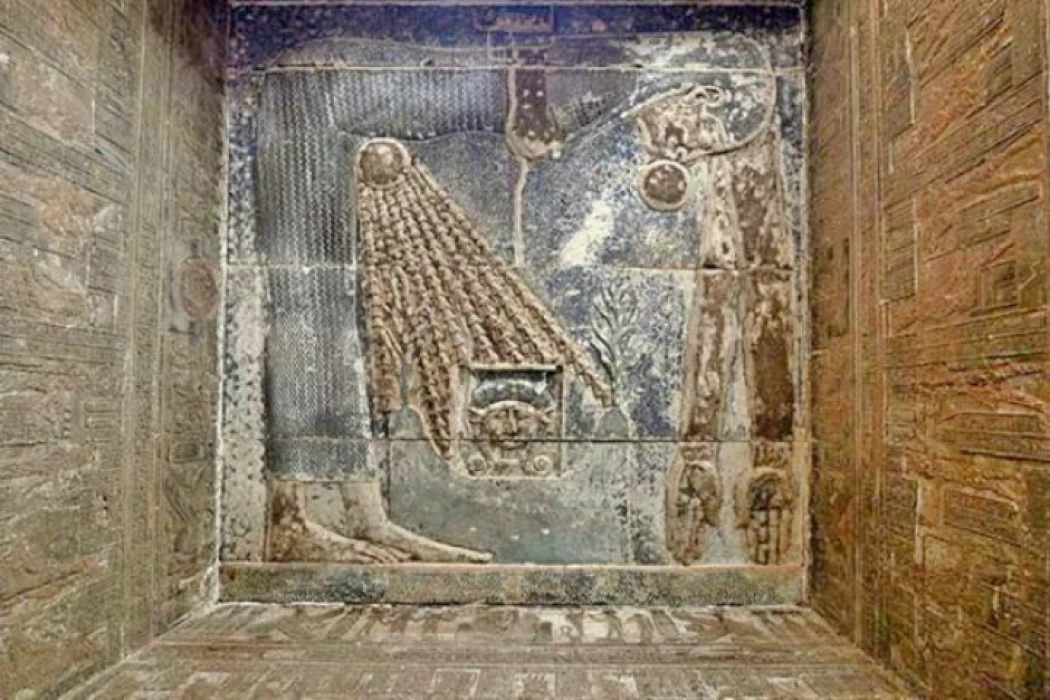
坚果女神 | 天空女神
女神坚果
在埃及诸神中,负责天堂的神性代表着一个长长的身体,上面复盖着星星,用手和脚紧紧地向地球弯曲。 另一方面,值得一提的是,坚果与死者的世界有关,因为她对待他们就像对待母亲对待她的孩子一样,为他们提供帮助和安全,此外,这位女神还向死者提供了
虽然万神之母已经决定和格布成家,但她的父亲舒和太阳神Ra都不同意这种关系,所以他们试图将他们分开,以便螺母没有孩子。
天空女神
这是因为镭射担心失去她的王位,然而,螺母设法让她的孩子和她的丈夫在一起,他们每个人都拥有强大的品质,因为塞思拟人化了邪恶之神,奥西里斯体现了死者的神,伊希斯代表了魔法女神,尼弗提象征着水的神性,而荷鲁斯长老拟人化了战争之神。
上帝镭射发现天堂女神的孩子出生的那一刻,他非常沮丧,以至于他设法通过阻止他们在一年中的365天内看到对方来分离那个联盟,然而,螺母从月球上获得
另一方面,这位女神与太阳有关,因为她在晚上吞下了上帝镭射,后者在第二天出现金碧辉煌,展示了新的黎明。
Among the Egyptian gods, the deity responsible for the heavens was depicted with an elongated body covered in stars, bent towards the earth, holding herself up with her hands and feet. On the other hand, it is worth mentioning that Nut was linked to the world of the dead. Since she treated them as a mother treats her children, offering them help and security, this goddess gave the deceased the concession to live again.
Although the mother of all gods decided to start a family with Geb, her father, Shu, and Ra, the sun god, did not agree with this relationship. So they tried to separate them so that Nut would not have children.
It was because Ra feared losing his throne; however, Nut managed to have children with her husband, each of them possessing powerful qualities: Seth personified the god of evil, Osiris embodied the deity of the dead, Isis represented the goddess of magic, Nephthys symbolised the deity of water, and Horus the Elder personified the god of war.
When the god Ra discovered the birth of the children of the goddess of the heavens, he was so upset that he managed to separate this union by preventing them from seeing each other for 365 days of the year. However, Nut obtained time slots from the moon to meet Geb. On the other hand, this goddess was linked to the sun, since she swallowed the god Ra at night and he appeared resplendent the next day, heralding the new dawn.
Nut is frequently portrayed as a person, but it can also occasionally be a cow or a tree. Among Nut's titles are: ‘Coverer of the Heavens,’ ‘She Who Protects,’ ‘She Who Carried All the Gods,’ and ‘She Who Bears a Thousand Souls.’
According to other widely held beliefs, the sun represents a child entering the mouth of the goddess of the sky (Nut) in the evening, then passing through her body during the night and emerging from her in the morning. This can occasionally take the shape of a tiny child of the goddess of the sky, who is represented by the celestial cow imagery. There was also a mixture of these different perceptions of the daily journey of the sun god, so it is not surprising that the story of the destruction of mankind is engraved with a drawing of the god Ra in his full human form sailing in his sacred boat on the back of the celestial cow Nut.
The idea of sunset as the swallowing of the sun by the goddess of the sky extends to the movement of the stars in the sky, which she sees as mere piglets disappearing into the mouth of Nut, who devours them in the morning and then brings them out again before nightfall. For this reason, the word Mesut in the Egyptian language literally means ‘time of birth’.
Nut played a funerary role in ancient Egyptian beliefs about rebirth and rebirth. Texts refer to the deceased's desire to become a star in Nut's body. According to the Ain Hemisphere doctrine of creation, Nut united with Geb to give birth to Osiris, who was associated with resurrection and the cycle of rebirth. Nut played a significant role in the revival of the deceased king in the Pyramid Texts, where she is referenced in numerous passages.
She also played the same role in the Coffin Texts. The prevailing belief was that the fate of the deceased was the same as that of the sun god. The thinking Egyptian mind imagined that the deceased passed in the company of the sun god inside the body of Nut, goddess of the night sky, to be born with him in the eastern sky the following morning, a notion confirmed by the Pyramid Texts from the Old Kingdom.
Naked woman covered in stars or wearing a long, tight dress decorated with stars, her arms and legs are extended.
She is depicted on the ceilings of tombs or chapels, or on the internal parts of lids and sarcophagi, likened to a tree representing its trunk, holding a tray topped with food and holding a vase of water in one hand. Cow, lioness, and vulture.














